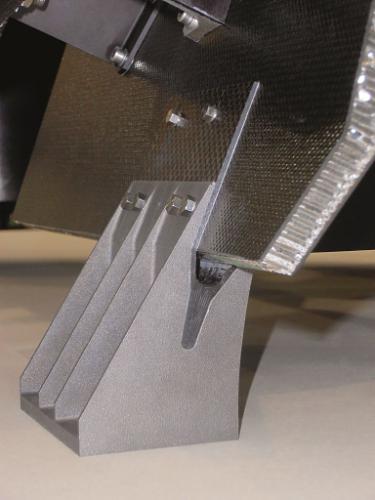 The latest generation of satellites from Airbus Defence and Space contain special clamps that join the body of the satellite to the feed and sub-reflector assembly at the top end. Clamps manufactured by conventional production methods did not meet the expectations of the Spanish corporate division. The engineers thus chose the additive-metal-manufacturing technique from EOS for production. This process, where metal powder coats are fused by laser, also allowed an easy adaptation of the component's design.
The latest generation of satellites from Airbus Defence and Space contain special clamps that join the body of the satellite to the feed and sub-reflector assembly at the top end. Clamps manufactured by conventional production methods did not meet the expectations of the Spanish corporate division. The engineers thus chose the additive-metal-manufacturing technique from EOS for production. This process, where metal powder coats are fused by laser, also allowed an easy adaptation of the component's design.
The components now survive the set range of 330 °C at a force effect of 20 kN permanently and with no problems. What's more, the Spanish aerospace experts could also reduce the production time for the holding clamps during assembly of the feed and sub-reflector unit by five days. Less than a month is now needed to assemble the three holding devices needed for each satellite. The costs savings during production are over 20 %. Moreover, the engineers have successfully reduced the weight of the component.
Additive manufacturing with titanium
Titanium could still be used as a proven material: it has emerged as a suitable material - as so often in the aerospace industry: apart from its advantages in terms of absolute weight and thermal diffusivity, it also offers and acceptable specific weight. The fixtures therefore hold the components to be mounted safely on the body and, on the other hand, attenuate the extreme variations in temperature in space: these range from -180 to +150°C, so that the strain on the material is correspondingly great.
Otilia Castro Matías from Airbus Defence and Space explains: "The solution has two advantages: firstly, we could optimise the production ourselves. In addition, we were able to improve the design so that the complete work piece can be manufactured in one operation."
www.eos.info





























































































